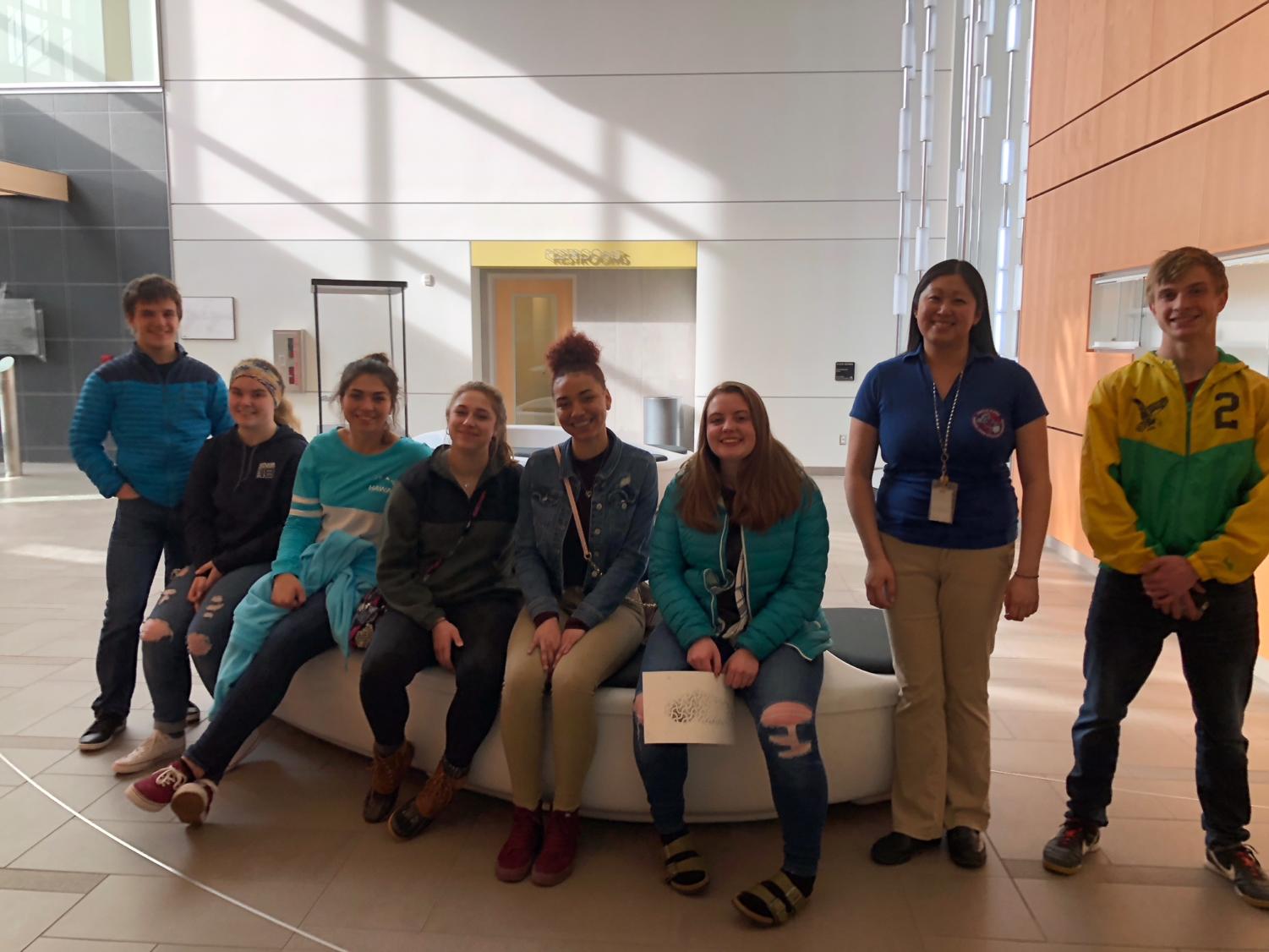Chemistry Class Investigates Crime Lab
May 23, 2018
At the end of April, seven chemistry students had the opportunity to visit and tour the Alaska State Crime Lab in Anchorage. Mrs. Brasher stated, “We were working on real life chemistry applications…visiting the crime lab was a way for students to see what job opportunities are in that field.” The group got an inside look at many of the rooms and processes completed in the labs.
The tour began with a stop at the evidence locker. The crime lab receives many packages each day, both from the police and community members. Some packages are directly delivered through a si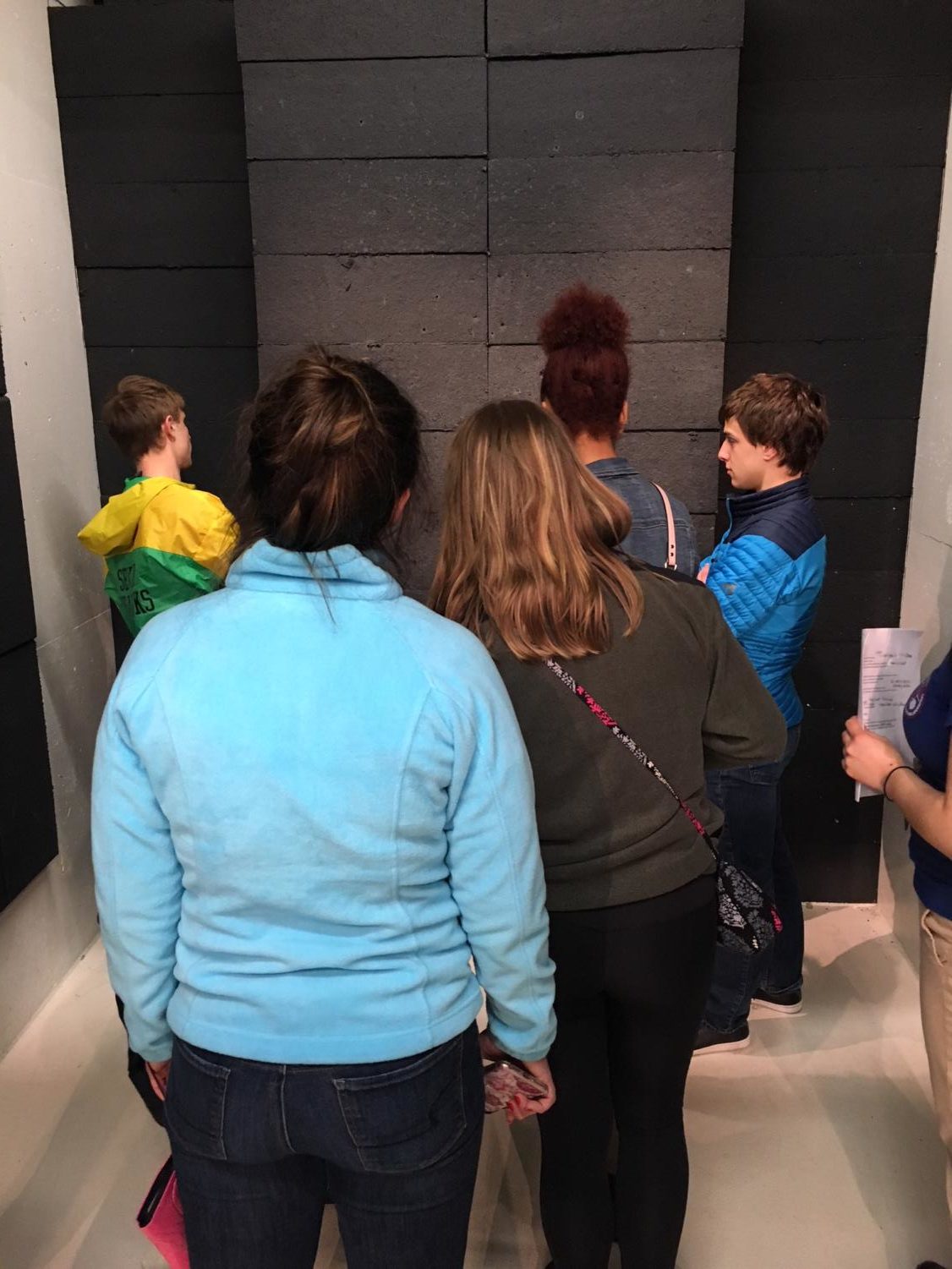 de door, but many are received through the mail. While getting guns and drugs are more common, they also receive many peculiar items, such as a whole plane propeller and human body parts. The evidence is sorted appropriately and delivered to the proper labs within the building.
de door, but many are received through the mail. While getting guns and drugs are more common, they also receive many peculiar items, such as a whole plane propeller and human body parts. The evidence is sorted appropriately and delivered to the proper labs within the building.
The next stop along the tour was all about firearms, including a smaller soundproof room with a short shooting range and water tank, both used for testing gunshots. The range was equipped with tunnels stuffed with bulletproof vest filling. These tunnels are made to both stop and recover the bullet. If the bullet doesn’t need to be recovered, it is shot into a block of rubber, made from old tires. Other equipment allowed guns to be fired without a human pullin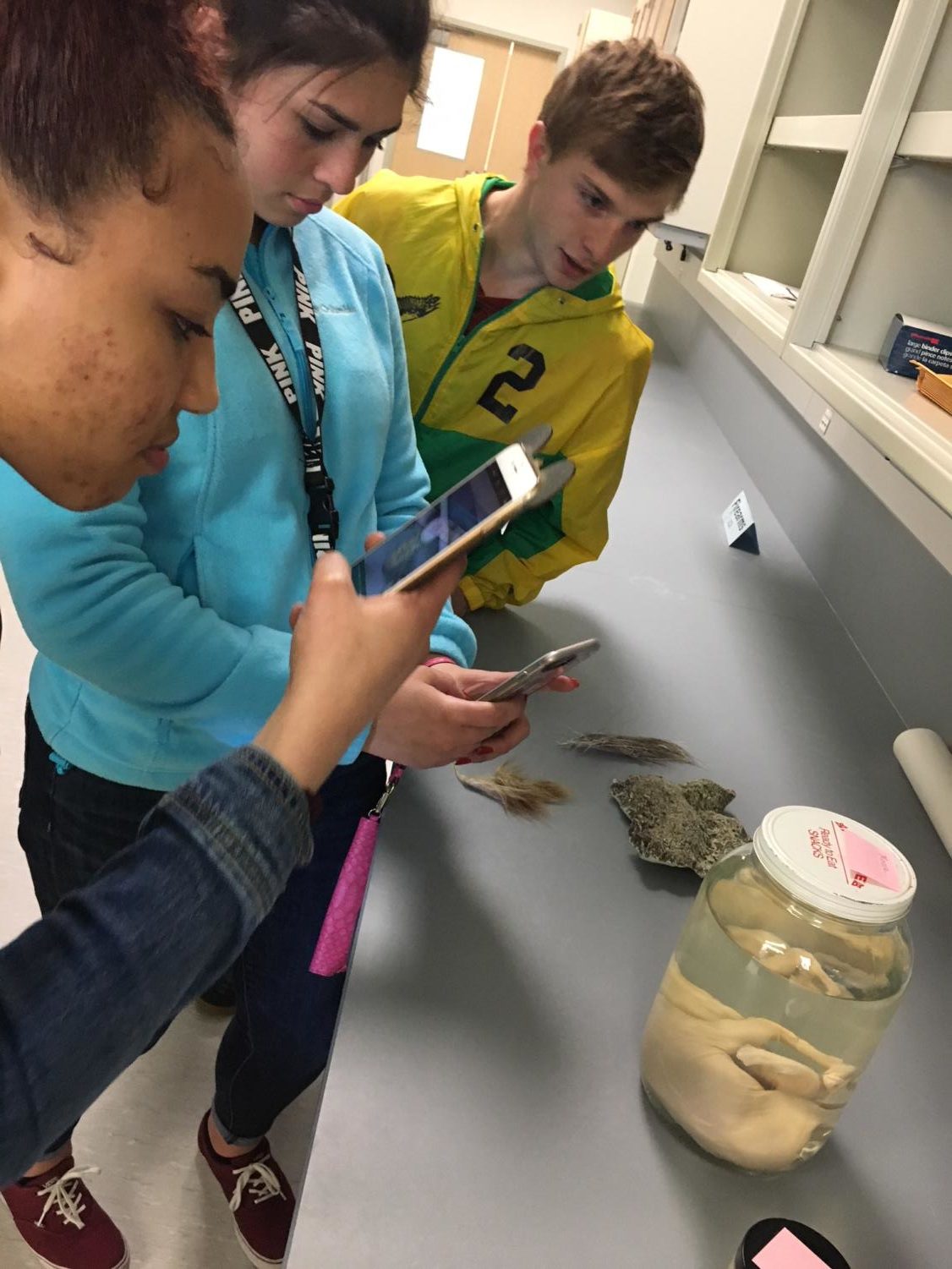 g the trigger. These are used if the weapon being tested is questionable. The water tank is also used for bullet recovery. The shooter places the gun into a tube and shoots directly into the water. The water slows the bullets, causing them to sink to the bottom, where they can easily be collected.
g the trigger. These are used if the weapon being tested is questionable. The water tank is also used for bullet recovery. The shooter places the gun into a tube and shoots directly into the water. The water slows the bullets, causing them to sink to the bottom, where they can easily be collected.
Outside the soundproof room, the rest of the firearm department has to do with bullet identification and Alaska’s fish and game management. As a bullet leaves a gun, the barrel creates grooves along the bullet casing. By using microscopes, scientists are able to match suspected guns directly to bullets found at crime scenes.
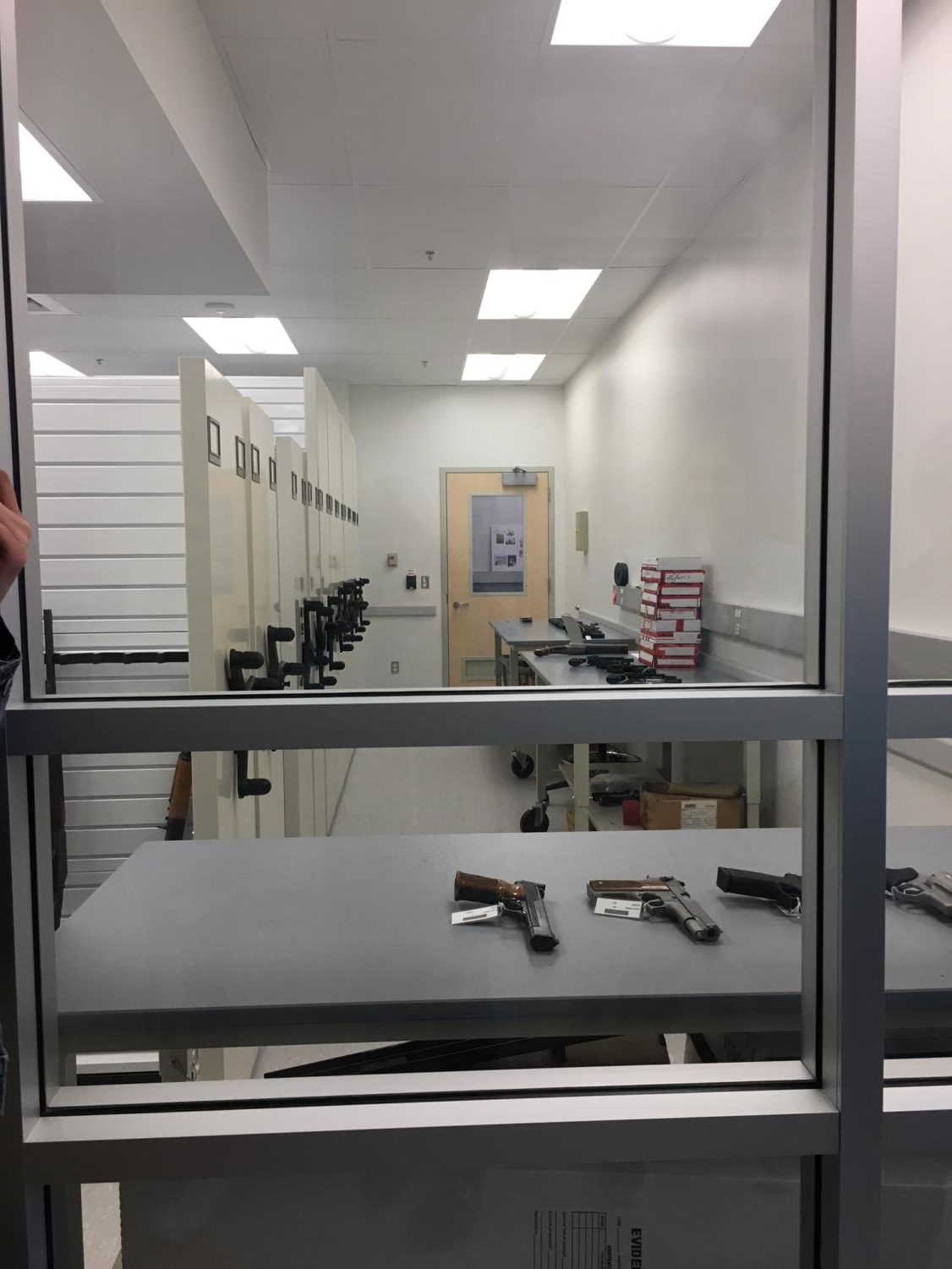
The crime lab has a ginormous gun locker to hold hundreds of guns, some over 50 years old. These are also used for identification. This room investigates illegal actions dealing with fishing and hunting, as well. If an animal is shot illegally, it is the crime lab’s job to prove why. Sometimes the animal is pregnant, or sometimes it was killed too young or out of season. Many times the antlers or horns of the animal can help them determine this.
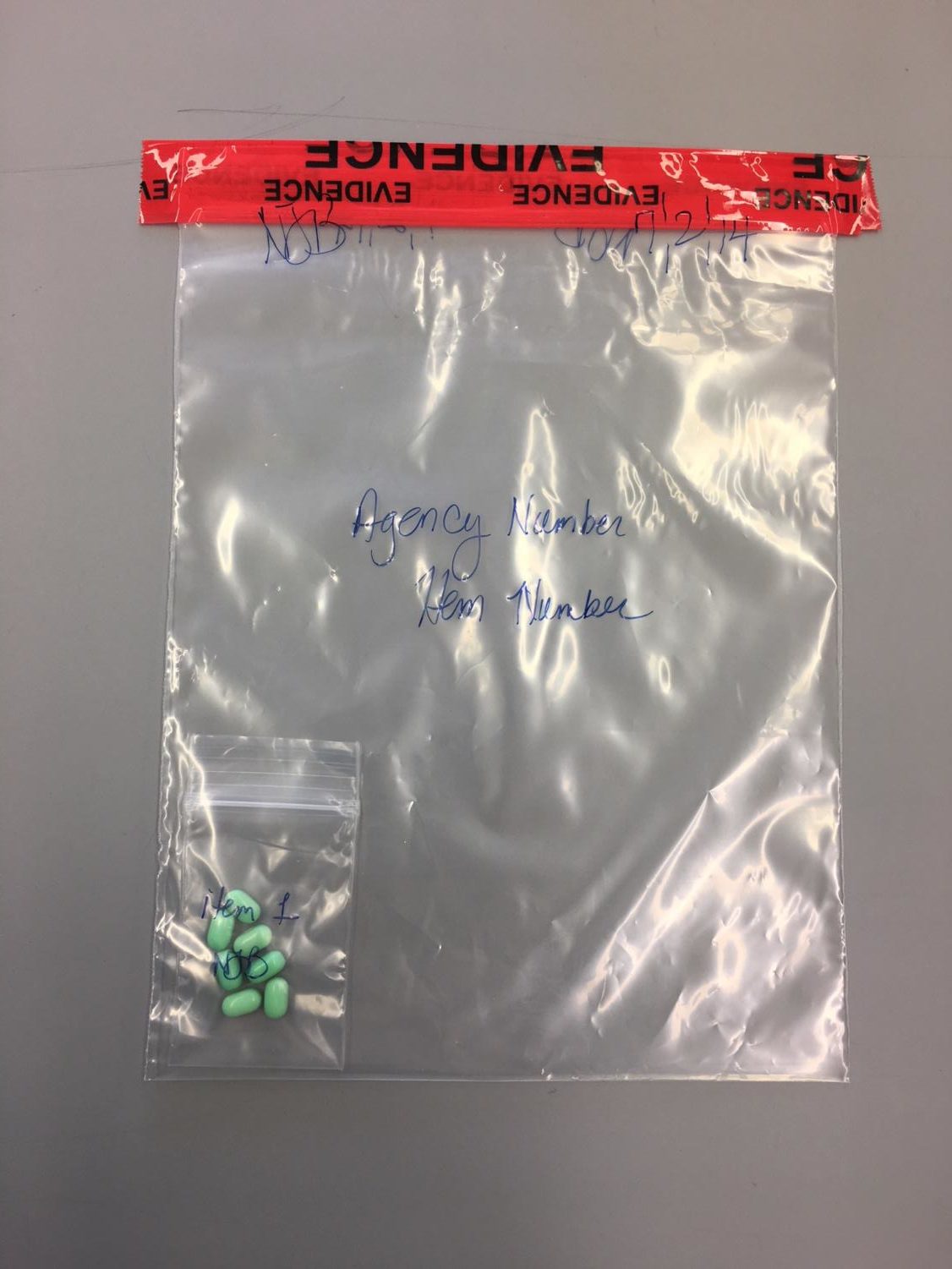 The chemistry lab is responsible for the identification of unknown substances. This may include odd powders or particles found at the crime scene. Many reference books with pictures show creative drug packaging and other disturbing evidence examples. The room was also equipped with many mass spectrometers used to identify substances by separating the components and giving the percentages of each. Scientists then take this information to cross reference it in order to identify the substance.
The chemistry lab is responsible for the identification of unknown substances. This may include odd powders or particles found at the crime scene. Many reference books with pictures show creative drug packaging and other disturbing evidence examples. The room was also equipped with many mass spectrometers used to identify substances by separating the components and giving the percentages of each. Scientists then take this information to cross reference it in order to identify the substance.
What would a crime lab be without fingerprints! This next room was all about the processes used for the identification of fingerprints, footprints, and tires. Fingerprints can be lifted many different ways. Of course, there is the dusting of black powder, like a old detective movie, but more commonly now, they use superglue. The super glue reacts with the oils left behind from the prints, making them easily identifiable. Scientists also experiment ways to lift prints off different objects, like soda cans. To test footprints, the suspected shoe steps onto an ink pad and then directly to a special piece of paper, which will reveal the pattern on the bottom of the shoe. This same sort of process can also be used for tires.
The last room was the DNA room. However, this room could not be entered, only observed due to the chanc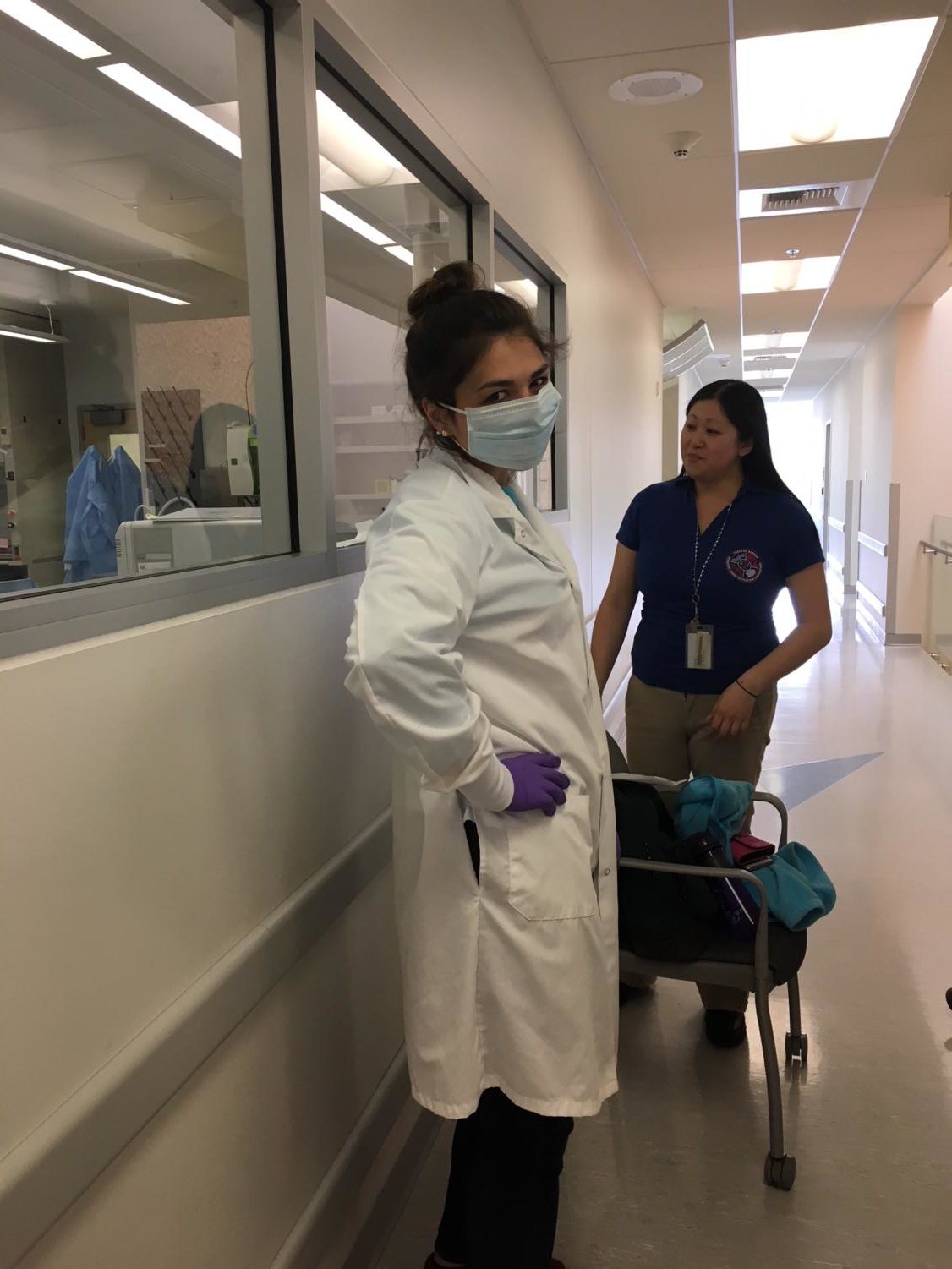 e of accidental contamination. Humans are constantly shedding DNA, and even the tiniest bit can completely skew the results. The scientists who work in this room are instructed to wear a long lab coat with tight sleeve openings, gloves, face masks, safety glasses, long pants and close-toed shoes. The DNA room can tell you who is related to whom and if there are any special DNA markers in a person.
e of accidental contamination. Humans are constantly shedding DNA, and even the tiniest bit can completely skew the results. The scientists who work in this room are instructed to wear a long lab coat with tight sleeve openings, gloves, face masks, safety glasses, long pants and close-toed shoes. The DNA room can tell you who is related to whom and if there are any special DNA markers in a person.
After visiting the crime lab, it is safe to say none of us are going to be committing any major crimes anytime soon. The process from evidence to identification is sometimes long, but it works. Seeing the concepts we learn about in the classroom applied to real life is a big eye opener. Students now have an increased understanding on crime lab processes and the working world.
